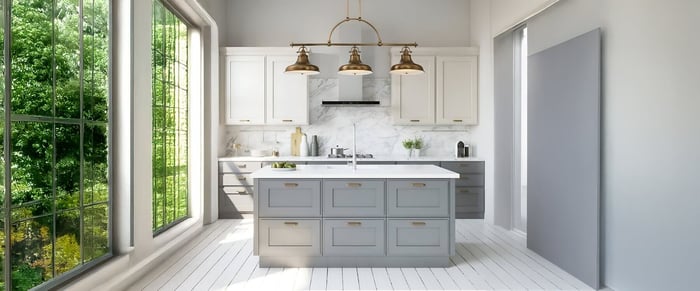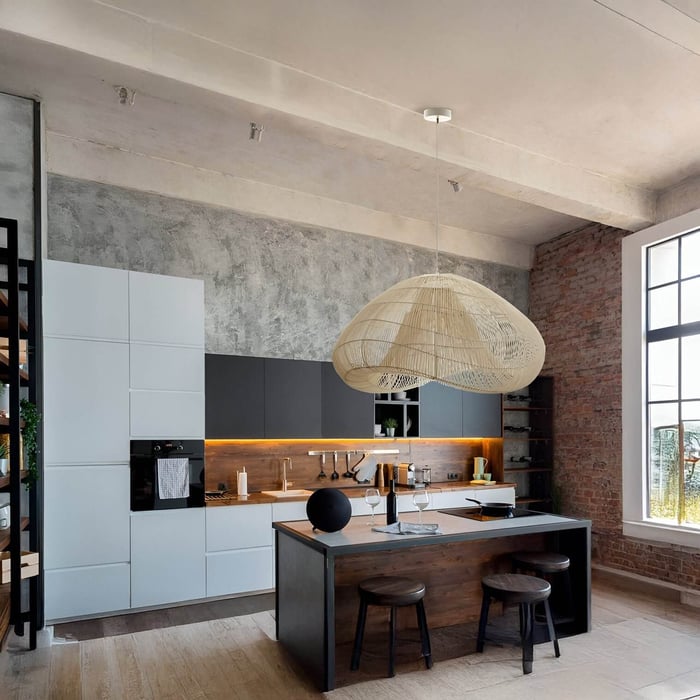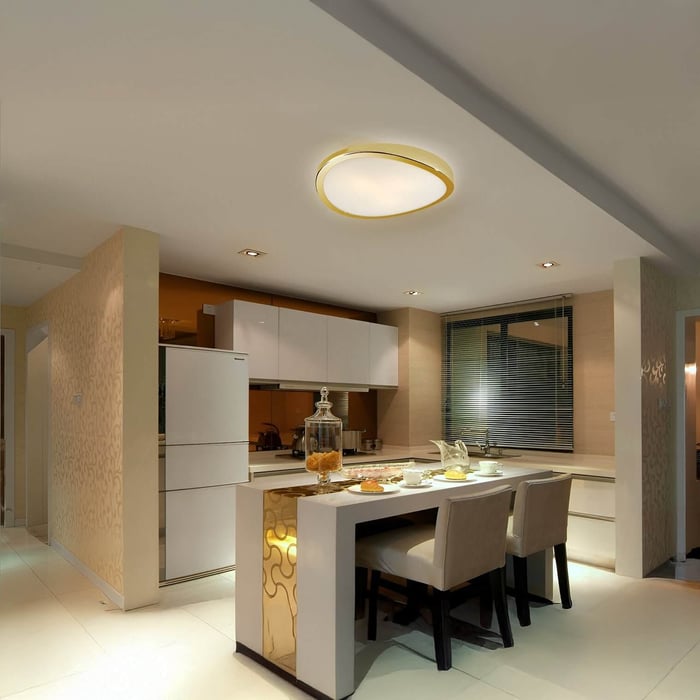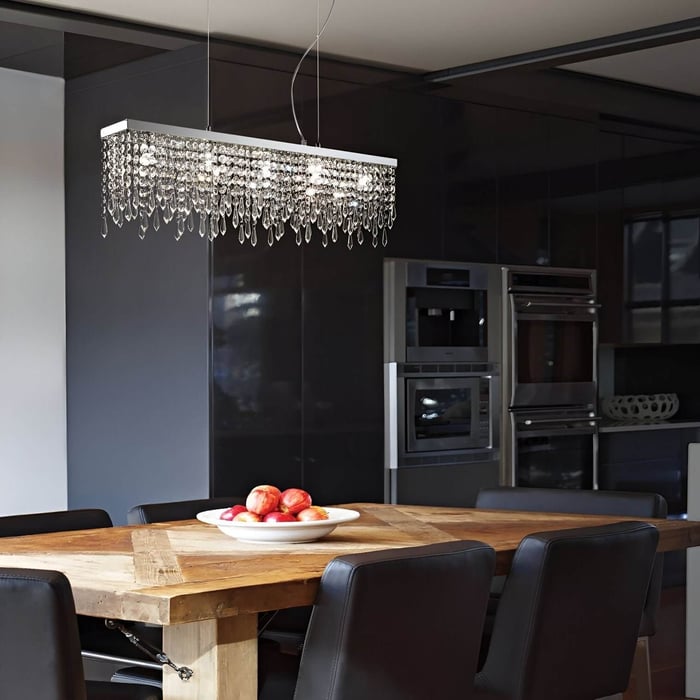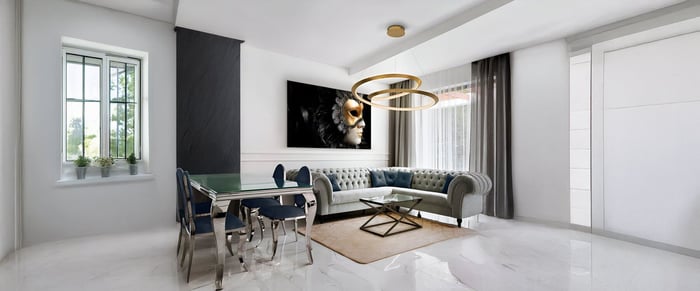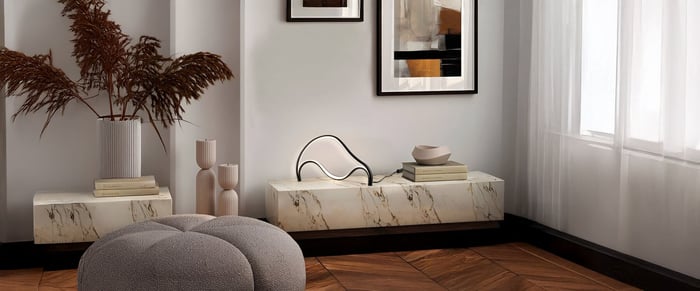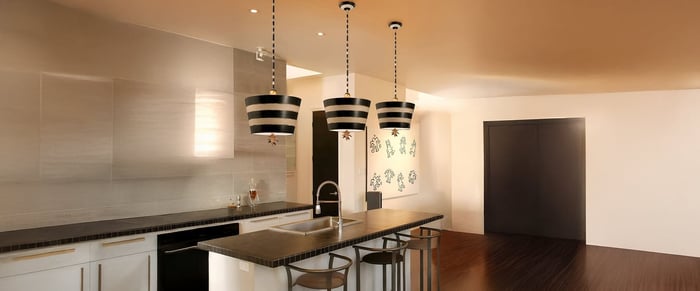Introduction
You’ve upgraded the finishes. The layout works. Every appliance is where it should be. Yet your kitchen still feels like it's missing something. Often, it’s not the design elements but the kitchen lights that fall short. Relying on a single light source makes the room feel flat, overly utilitarian, or visually incomplete.
A successful kitchen design doesn’t stop with surfaces, it ends with light. And not just any light. Today’s best interiors use a layered lighting approach to make kitchens both practical and beautiful. Combining ambient, task, and accent lighting helps you define zones, enhance usability, and create mood. At the heart of this approach? Carefully selected kitchen lights that work in harmony to complete the space.
Whether you're remodeling or simply upgrading fixtures, layering kitchen lights like recessed downlights, under-cabinet LEDs, pendant lights, chandeliers, and floor lamps is the key to unlocking a space that feels intentional, inviting, and highly functional.
Why Kitchens Often Lack Depth and Dimension
Many kitchens rely heavily on recessed lights or a single flush ceiling fixture. While this provides basic illumination, it rarely offers nuance or warmth. A one-size-fits-all lighting setup flattens the room, removes visual contrast, and fails to account for different activities throughout the day.
What’s missing is depth, a sense of light shaping the environment. A single overhead source can’t achieve that. That’s where kitchen lights with multiple layers come into play. They let you divide the room into zones, control mood, and direct attention. A layered setup not only improves performance, but also adds design clarity and a natural focal point.
What Is a Layered Lighting Scheme and Why It Works
Layered lighting is the use of three core types of light in a single space:
Ambient Lighting
This is the general illumination that fills the room, often provided by recessed cans or flush-mounted fixtures. It prevents dark spots and ensures basic visibility.
Task Lighting
Task lighting targets specific work areas, think under-cabinet strips above counters or directional lights over stovetops. It helps you see clearly when chopping, reading, or cleaning.
Accent Lighting
Accent lighting introduces contrast and style. It includes decorative kitchen lights like pendant lights, chandeliers, or even strategically placed floor lamps. These create warmth, define areas, and visually complete the room.
Together, these layers allow for versatility: bright and crisp for prep, soft and ambient for entertaining. A well-balanced layout of kitchen lights ensures your space performs all day, and looks good doing it.
Accent Lighting with Pendant Lights, Chandeliers & Floor Lamps
Accent lighting is what gives a kitchen depth and definition. It transforms a purely functional space into one that feels considered and composed. Once ambient and task layers are in place, kitchen lights in the form of decorative accents like pendant lights, chandeliers, and floor lamps bring in visual contrast, warmth, and a sense of purpose. These fixtures help zone your kitchen, guide movement, and add just enough drama to make the space feel finished.

Pendant Lights Over Islands and Bars
Pendant lights are arguably the most versatile accent fixtures in any kitchen. Positioned above islands or peninsula counters, they create a strong vertical line that breaks up open ceiling space while casting targeted light onto high-traffic surfaces. Beyond functionality, they serve as visual signposts, indicating where prep ends and entertaining begins.
When installing pendant lights, consider both quantity and spacing. In most cases, groups of two or three are ideal for achieving balance. Even spacing (typically 24–30 inches apart) and a consistent hanging height of 30–36 inches above the countertop ensures optimal brightness without interrupting sightlines. Use dimmable bulbs to adjust for mood, whether you're chopping vegetables or hosting brunch.
Stylistically, pendant lights come in an enormous range, sleek domes, transparent globes, drum shades, even linear clusters. Choose a form that matches the tone of your kitchen, but don’t be afraid to contrast materials. Matte finishes can soften glossy cabinetry, while glass pendants can introduce brightness and texture without visual bulk.
The key to effective pendant lighting isn’t just placement, it’s integration. Align the fixture’s material and form with surrounding elements, such as faucet hardware or stool bases, to pull the room together. When done well, pendant lights not only perform a functional role but also act as the kitchen’s signature design element.
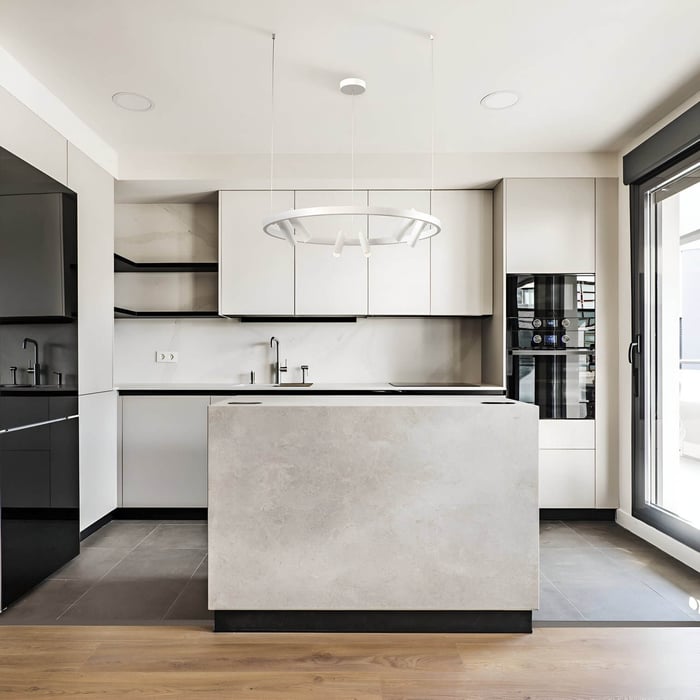
Chandeliers as Dining Area Focal Points
A chandelier may seem like an unexpected choice in a kitchen, but it can be the difference between a functional dining space and one that feels intentionally styled. In open-plan kitchens where cooking, eating, and relaxing happen in one space, chandeliers play a central role in visually separating zones and creating intimacy.
Placed above a dining table or banquette, a chandelier provides soft, enveloping light while drawing the eye downward, bringing scale and shape to what is often an open void. Unlike downlights, which spread light broadly, chandeliers tend to offer a more centralized glow, perfect for slow dinners, evening gatherings, or creating ambiance after the workday ends.
Mount your chandelier approximately 30–34 inches above the table surface. For rooms with higher ceilings, consider fixtures with adjustable downrods or chain lengths to maintain proportion. The scale of your chandelier should be appropriate to the table, too small and it gets lost; too large and it can dominate the room.
Design-wise, opt for something that complements your overall lighting scheme without competing with nearby kitchen lights or pendant lights. If your kitchen already features bold hardware or colored cabinetry, consider a simple geometric frame. If the palette is neutral, a more sculptural or multi-arm chandelier can act as a powerful visual counterpoint.
Beyond aesthetics, chandeliers serve as the emotional heart of the kitchen-dining zone. They gather people around a table, cast flattering light, and provide a sense of pause in an otherwise utility-driven room.
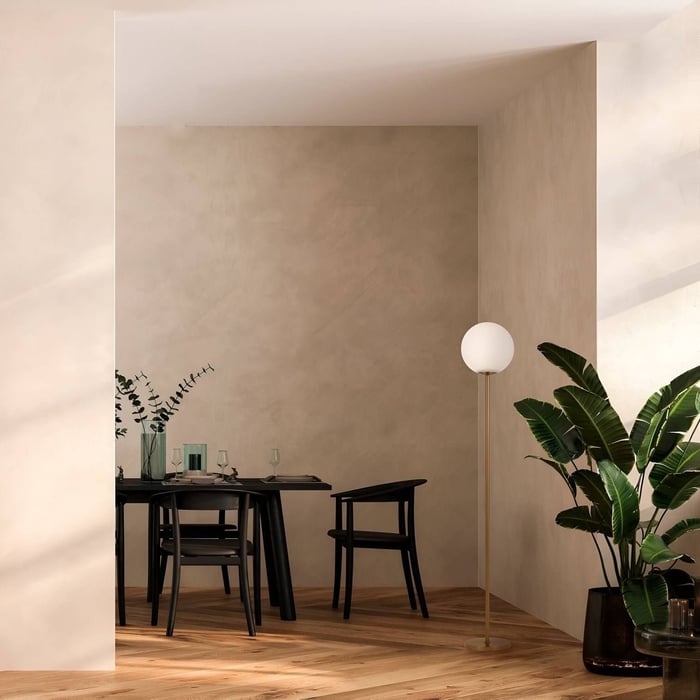
Floor Lamps in Open-Concept Kitchens
Floor lamps may not be the first lighting fixture that comes to mind when designing a kitchen, but in open-concept layouts, they are surprisingly effective. They bring in a level of flexibility and softness that fixed fixtures often can’t provide. Whether your kitchen flows into a casual seating area, reading nook, or small lounge, a floor lamp can help define that space and soften the overall environment.
Placed thoughtfully, a floor lamp fills the mid-height visual gap between cabinetry and ceiling. It also serves a dual purpose: offering functional illumination in low-traffic corners and acting as an ambient glow during evenings or entertaining. Look for models with slim profiles or arc arms that can tuck neatly beside benches, consoles, or open shelves.
For multi-use zones, consider floor lamps with adjustable heads or built-in dimming to accommodate different needs, like task lighting for reading versus softer background light for relaxing. Shade selection also matters. Linen or fabric shades diffuse light gently, creating a cozy atmosphere that complements brighter overhead kitchen lights.
One of the biggest advantages of floor lamps is their mobility. As your needs change, new layout, added furniture, seasonal decor, your lamp can move with you. For renters or those seeking non-permanent upgrades, this makes floor lamps a smart, style-forward solution.
In the context of layered lighting, floor lamps serve as a connective thread between the ambient and accent layers. They add height variation, tactile materiality, and a calming light source that makes kitchens feel less rigid and more livable.
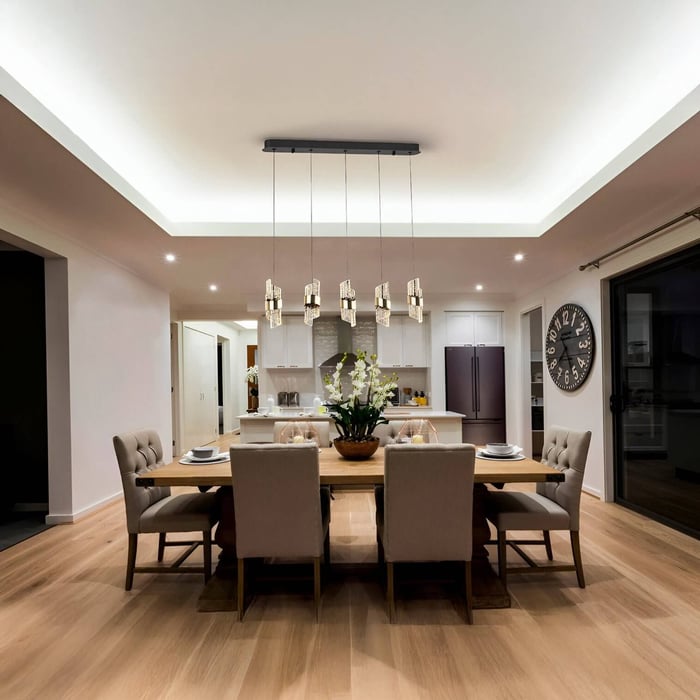
Combining Accent Fixtures with Recessed and Task Lighting
Accent kitchen lights need to work with, not against, your ambient and task sources. Here’s how to coordinate layers effectively:
Match intensity to purpose: Use dimmers to control brightness. Keep pendants softly lit during casual meals and task lighting strong during prep.
Coordinate materials: Unify metals and finishes across all lighting elements. If your cabinet pulls are blackened steel, match your pendant canopy or lamp base.
Zone with purpose: Let ambient light fill the room, task lighting handle the work, and accent kitchen lights add personality and depth.
When your lighting layers feel connected, the entire kitchen feels cohesive, no one element fighting for attention, all of them contributing to form and function.
Placement and Styling Tips for Layered Kitchen Lighting
Mounting and Spacing
Pendant lights: Space them 24–30 inches apart above an island or bar.
Chandeliers: Center above a table, hanging 30–34 inches from its surface.
Floor lamps: Position in transitional corners or next to soft seating to add glow without clutter.
Visual Hierarchy
Let each type of kitchen light do what it does best. Pendants create rhythm. Chandeliers bring drama. Recessed lights fill gaps. Floor lamps offer depth.
Consistency
Choose a shared visual language, maybe a repeated finish or repeated shape, to tie all your fixtures together. Consistency avoids clutter and helps guide the eye through the room.
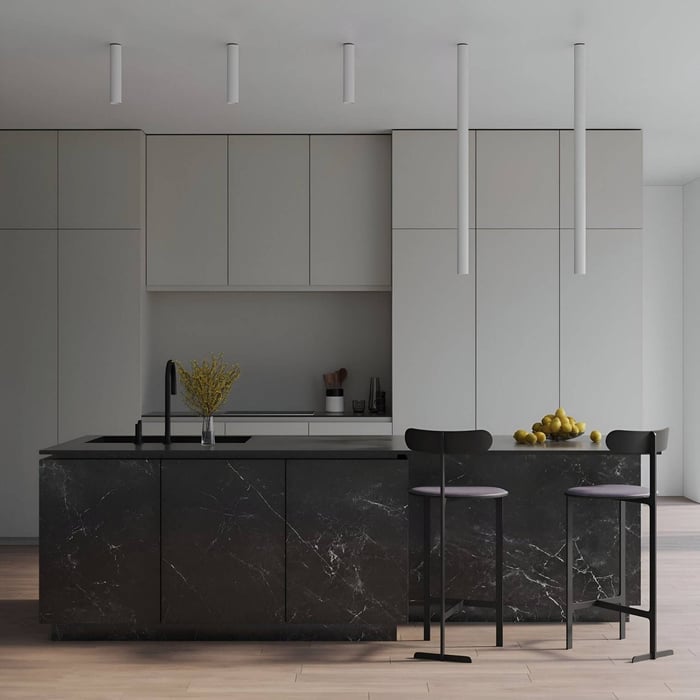
Conclusion: Why Layered Kitchen Lights Make All the Difference
Lighting isn’t just functional, it’s architectural. A well-lit kitchen is a layered composition of brightness, tone, and intention. By going beyond basic overheads and embracing layered kitchen lights, you gain control over both the feel and function of the space.
Whether it’s pendant lights casting soft light on an island, a chandelier defining a dining zone, or a floor lamp warming up a nearby nook, these layers work together to make your kitchen complete.
Looking to finish your kitchen the right way?
Explore our curated range of kitchen lights, from modern pendant lights and statement chandeliers to flexible floor lamps that bring every layer of your lighting design to life.
